Pressure and capacity are the two main specifications to look for when buying an air compressor.
Remember: pressure is ‘how strong’, capacity is ‘how much’.
What’s the difference between a very small and a very large compressor? It’s not the pressure, it’s the capacity.
8 bar (115 psi) pressure, low capacity compressor!
7.5 bar (115 psi) pressure, high capacity compressor.
Most compressors for sale at the various hardware shops and compressor dealers are between 125 and 175 psi ( 8.5 – 12 bar) pressure. But their capacity is the big difference. The pressure you need is dictated by the kind of tools / equipment you use (‘this nailer needs 100 psi’, or ‘the machine operates at 125 psi’).
The needed capacity of your air compressor is dictated by the air consumption of all your tools and machines together (also depending how many you use at the same time).
Most compressed air equipment is designed to operate at around 90 – 100 psi (6 – 7 bar). For this reason, most people only need a compressor with a maximum pressure of 7 bar.
Pressure gauge
For some applications, an higher pressure is needed, like 15 or 30 bar. Sometimes even up to 200 – 300 bar or more (scuba diving and paintball for example).
So how much pressure do YOU need? Look at the tools or machines you use, it should state the required minimum pressure. If not, 100 psi (7 bar) is safe to assume for hand tools. Most machinery also operates at 100 psi, but to be sure check the specs or ask the manufacturer. If it is a replacement compressor, you can buy a compressor with the same pressure rating as the previous one.
Capacity is the amount of air that the compressor can pump out.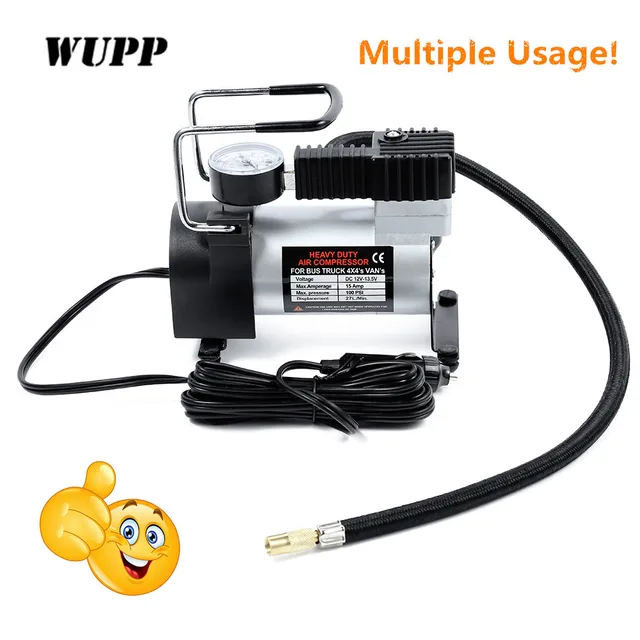 It is expressed in CFM (cubic feet per minute) or liters per second or m3 per minute or hour.
It is expressed in CFM (cubic feet per minute) or liters per second or m3 per minute or hour.
What’s the difference between a very small and a very large compressor? It’s not the pressure, it’s the capacity. Again: pressure is ‘how strong’, capacity is ‘how much’.
Flow meter
Tank size Now don’t be fooled by compressor manufacturers who state the size of the air tank (“a 200 liter compressor”). I see this a lot, especially for the smaller home/workshop compressors. Tank size doesn’t say a thing. It’s only a buffer between the compressor and the user. The capacity of the compressor is in ‘liters per minute’, not in ‘liters’. You can fit a very small compressor on a 1000 liter tank, but it will take ages to fill up the tank.
So, how much capacity do you need?
Add up the requirements for all the air tools and machines that you have. This is is the maximum capacity that your equipment requires together. That is, if you use all the tools and machines at the same time (which usually is not the case).
If you already have one or more compressors and need to buy a replacement machine, it is advisable to do a flow measurement to find out the maximum needed capacity.
Free Air Delivery
185 cfm (5.2 m³/min)
Pressure
100 psig (6.9 bar)
Emissions Tier Level
Tier 2
View
Add to compare
Free Air Delivery
5.2 m³/min (185 cfm)
Pressure
100 psi (6.9 bar)
Emissions Tier Level
Tier 2
View
Add to compare
Free Air Delivery
495 cfm (14.02 m³/min)
Pressure
175 psi (12 bar)
Engine
Cummins - 6BTA5.9C
View
Add to compare
Free Air Delivery
550 cfm (15.6 m³/min)
Pressure
150 psi (10.5 bar)
Engine
Ashok Leyland - H6DTi
View
Add to compare
Free Air Delivery
475 cfm (13.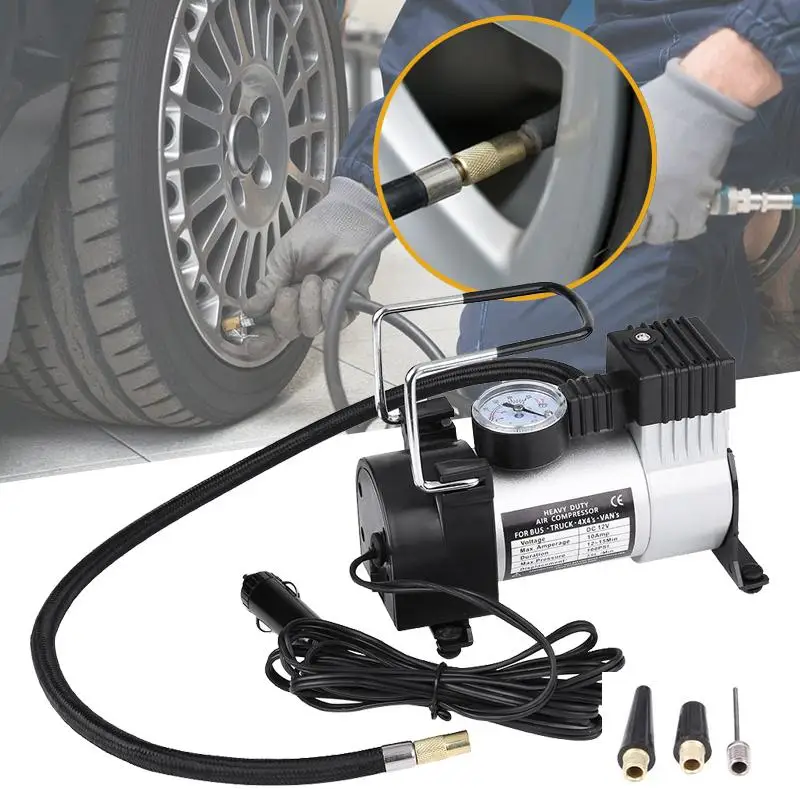 5 m³/min)
5 m³/min)
Pressure
200 psi (14 bar)
Engine
Ashok Leyland - H6DTi
View
Add to compare
Free Air Delivery
550 cfm (15.6 m³/min)
Pressure
200 psi (14 bar)
Engine
Cummins - 6CTA8.3C
View
Add to compare
Free Air Delivery
675 cfm (19.12 m³/min)
Pressure
210 psi (14.5 bar)
Engine
Cummins - 6CTA8.3C
View
Add to compare
Free Air Delivery
470 cfm (13.31 m³/min)
Pressure
150 psi (10.5 bar)
Engine
Cummins - 6BTA5.9C
View
Add to compare
Free Air Delivery
514 cfm (14.5 m³/min)
Pressure
175 psi (12 bar)
Engine
Ashok Leyland - H6DTi
View
Add to compare
Free Air Delivery
550 cfm (15.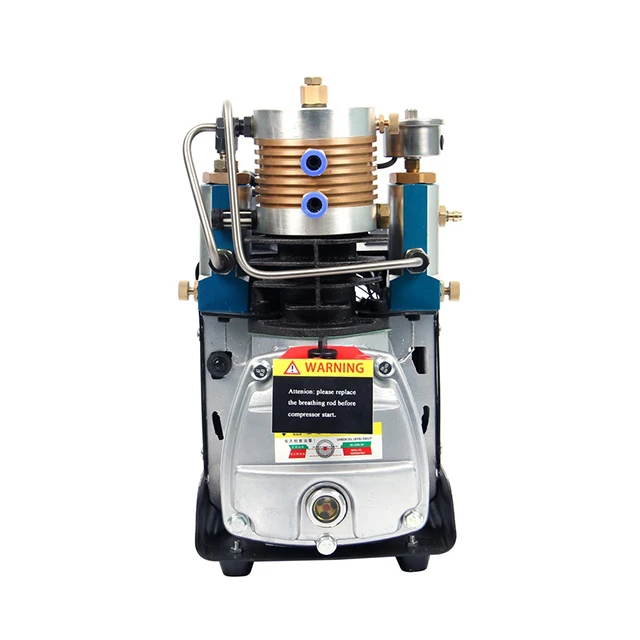 6 m³/min)
6 m³/min)
Pressure
190 psi (13 bar)
Engine
Ashok Leyland - H6DTi
View
Add to compare
Free Air Delivery
675 cfm (19.12 m³/min)
Pressure
210 psi (14.5 bar)
Engine
Cummins - 6CTA8.3C
View
Add to compare
Free Air Delivery
675 cfm (19.12 m³/min)
Pressure
175 psi (12 bar)
Engine
Cummins - 6CTA8.3C
View
Add to compare
Free Air Delivery
500 cfm (14.16 m³/min)
Pressure
218 psi (15 bar)
Engine
Ashok Leyland - H6DTi
View
Add to compare
Free Air Delivery
470 cfm (13.31 m³/min)
Pressure
150 psi (10.3 bar)
Engine
Cummins - 6BTA5.9C
View
Add to compare
Free Air Delivery
600 cfm (17 m³/min)
Pressure
100 psi (7 bar)
Engine
Cummins - 6BTA5. 9C
9C
View
Add to compare
Free Air Delivery
514 cfm (14.55 m³/min)
Pressure
175 psi (12 bar)
Engine
Ashok Leyland - H6DTi
View
Add to compare
Free Air Delivery
550 cfm (15.6 m³/min)
Pressure
190 psi (13 bar)
Engine
Ashok Leyland - H6DTi
View
Add to compare
Free Air Delivery
400 cfm (11.33 m³/min)
Pressure
170 psi (11.7 bar)
Engine
Cummins - 6BTA5.9C
View
Add to compare
Free Air Delivery
400 cfm (11.33 m³/min)
Pressure
175 psi (12 bar)
Engine
Cummins - 6BTA5.9C
View
Add to compare
Free Air Delivery
415 cfm (11.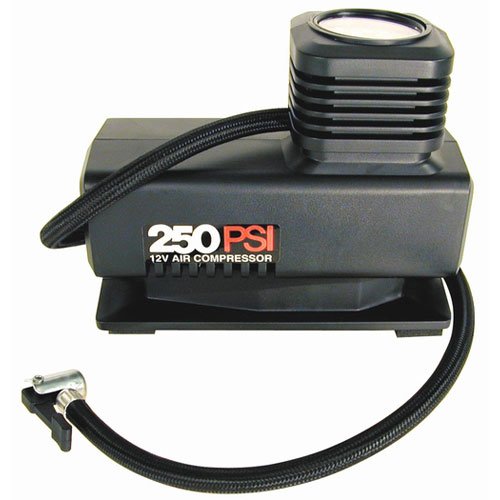 75 m³/min)
75 m³/min)
Pressure
150 psi (10.3 bar)
Engine
Ashok Leyland - ALUW04CTi
View
Add to compare
Free Air Delivery
315 cfm (8.92 m³/min)
Pressure
125 psi (8.6 bar)
Engine
Ashok Leyland - ALUW04CT
View
Add to compare
Free Air Delivery
250 cfm (7.08 m³/min)
Pressure
100 psi (7 bar)
Engine
Ashok Leyland - ALUW04D
View
Add to compare
Free Air Delivery
315 cfm (8.92 m³/min)
Pressure
100 psi (7 bar)
Engine
Ashok Leyland - ALUW04D
View
Add to compare
Free Air Delivery
360 cfm (10.19 m³/min)
Pressure
100 psi (7 bar)
Engine
Ashok Leyland - ALUW04CT
View
Add to compare
Free Air Delivery
415 cfm (11.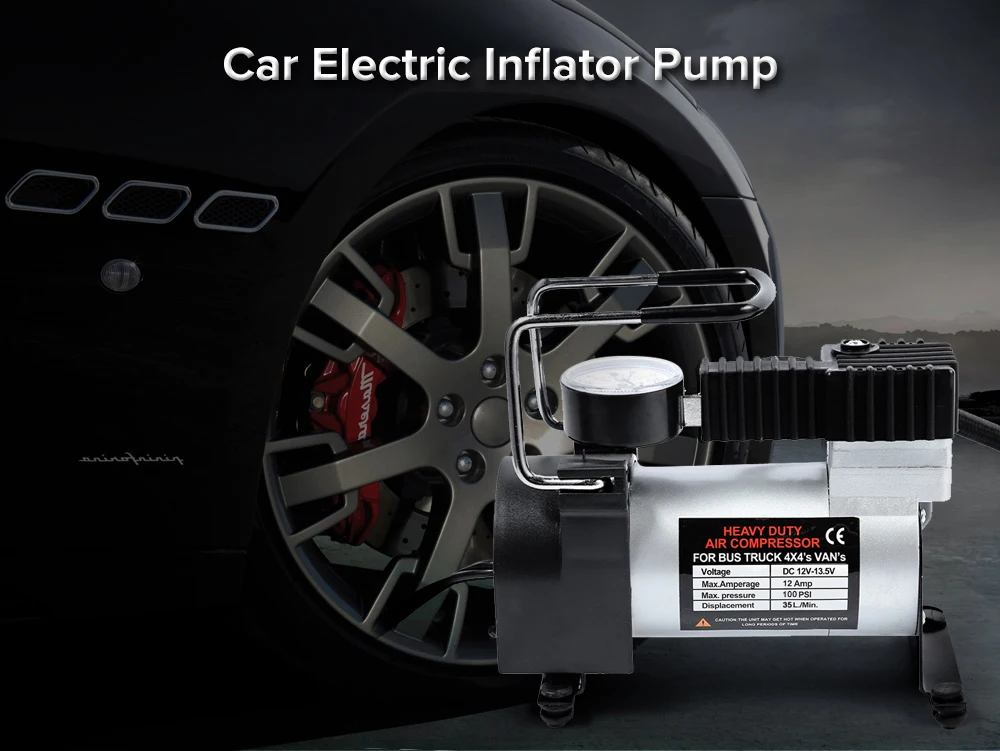 75 m³/min)
75 m³/min)
Pressure
100 psi (7 bar)
Engine
Ashok Leyland - ALUW04CT
View
Add to compare
Free Air Delivery
12 m³/min (425 cfm)
Pressure
6.89 bar (100 psig)
View
Add to compare
Free Air Delivery
11.3 m³/min (400 cfm)
Pressure
80 psig (5.5 bar) /
200 psig (15.5 bar)
View
Add to compare
Free Air Delivery
375 cfm (10.6 m³/min)
Pressure
125 psig (8.6 bar)
Emissions Tier Level
Tier 2
View
Add to compare
Free Air Delivery
10.6 m³/min (375 cfm)
Pressure
10.3 bar (150 psig)
View
Add to compare
{{p.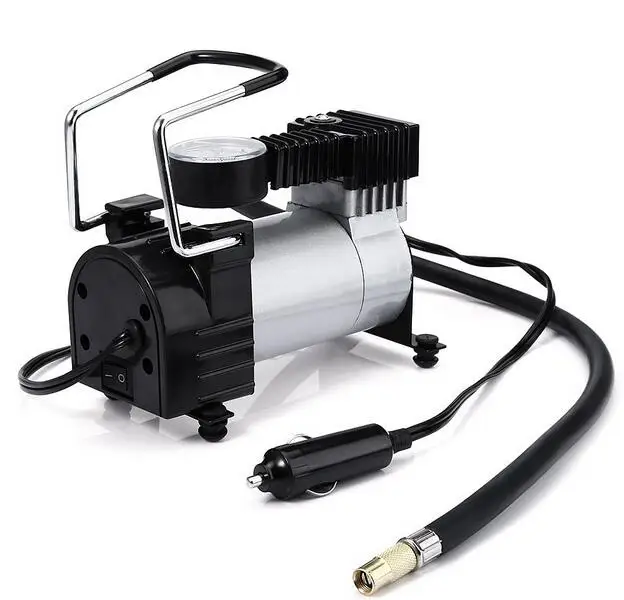 shortName}}
shortName}}
Model {{selectedProducts.length + i}}
Compare
Compressor Types Compressors Choosing an Air Compressor Compressed Air Wiki How To
The correct size of a new air compressor is one of the most important issues.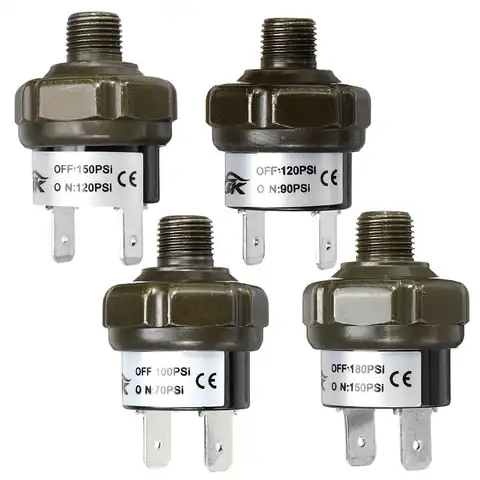 As with everything else, the new compressors on the market are more efficient and use better technology, so you need to have a good idea of how you intend to use the unit in order to choose the right size. An improperly selected air compressor can adversely affect your business processes and/or increase your costs due to wasted energy.
As with everything else, the new compressors on the market are more efficient and use better technology, so you need to have a good idea of how you intend to use the unit in order to choose the right size. An improperly selected air compressor can adversely affect your business processes and/or increase your costs due to wasted energy.
Air compressor selection must consider flow and pressure requirements. When discussing compressed air systems, the terms pressure and flow are used very often.
Pressure can be measured in pounds per square inch (psi) or bar (metric units of pressure). Simply put, pressure refers to the sum of the forces required to do a certain amount of work at any given time. To give an example of what pressure is and how it works, imagine that you have to move a block of wood across a table. As shown in the figure below, 75 psi of compressed air does not provide enough force to move the bar, while 100 psi is sufficient to move the bar the required distance.
As shown in the figure below, 75 psi of compressed air does not provide enough force to move the bar, while 100 psi is sufficient to move the bar the required distance.
An air compressor must provide enough pressure to perform a specific task (in this case, to move a block of wood). As shown in the figure, if 100 psi is required to move the bar, then less pressure simply won't get the job done. To choose the right compressor size, you need to know how much pressure you need. Otherwise, you may have problems, as shown in the figure below, where insufficient pressure prevents the bar from moving and doing the job.
Flow rate, also called capacity (FAD), is measured in cubic feet per minute (cfm), liters per second (l/s) or cubic meters per hour (m<2>3/h), depending on geographic location. Simply put, flow is the ability of a compressor to perform a task for a given amount of time. The required flow rate is determined by the time required to complete a particular task.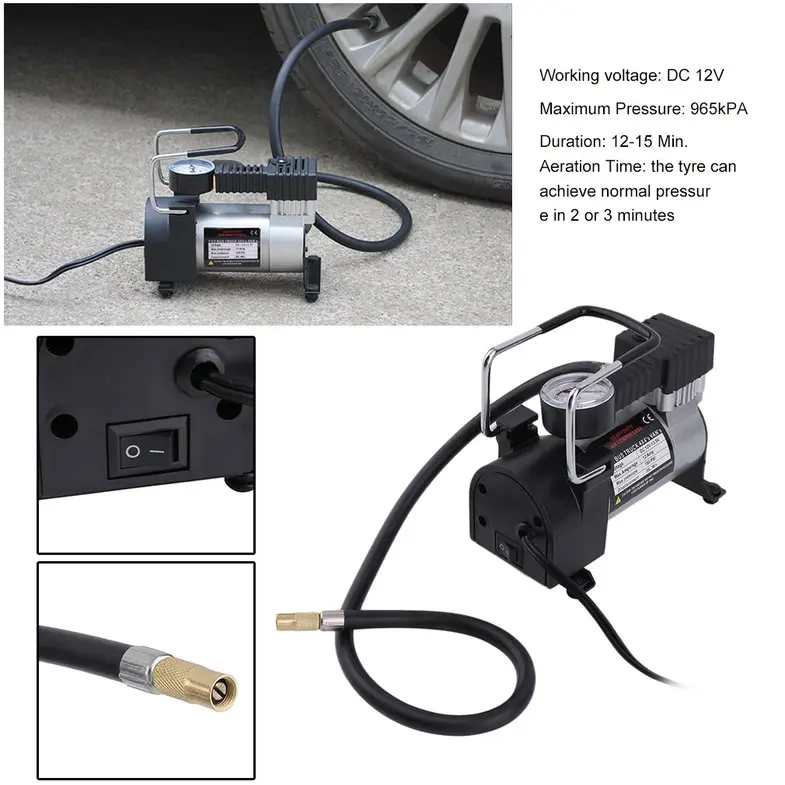 Let's look at the concept of expense using the example of a wooden block. To move the bar a certain distance every hour, less flow is required, respectively, a compressor and a smaller tank will be required to complete this task. By the time the bar needs to be moved next time, the compressor will cycle on and off and refill the reservoir. But moving a block of wood continuously for a certain amount of time will require more continuous air flow, i.e. you need a larger compressor. With insufficient flow, the process will be interrupted frequently so that the compressor can pressurize the expansion tank. This situation indicates that the compressor is undersized.
Let's look at the concept of expense using the example of a wooden block. To move the bar a certain distance every hour, less flow is required, respectively, a compressor and a smaller tank will be required to complete this task. By the time the bar needs to be moved next time, the compressor will cycle on and off and refill the reservoir. But moving a block of wood continuously for a certain amount of time will require more continuous air flow, i.e. you need a larger compressor. With insufficient flow, the process will be interrupted frequently so that the compressor can pressurize the expansion tank. This situation indicates that the compressor is undersized.
So to ensure that you have enough compressed air in a given area, you need to consider the amount of compressed air (cfm) and pressure (psi) needed to get the job done right.
To determine the total flow, you can contact the manufacturer of equipment that uses compressed air and request the necessary information.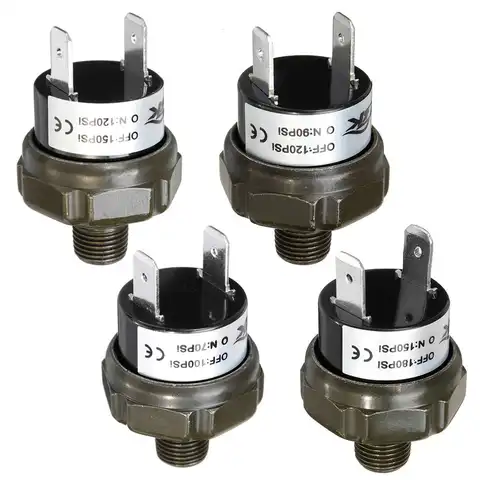 But it is best to invite a specialist who will conduct a so-called “pneumatic audit” to accurately measure the flow. It is important to remember that rotary screw air compressors have a consumption per kW or hp. usually slightly more than reciprocating compressors.
But it is best to invite a specialist who will conduct a so-called “pneumatic audit” to accurately measure the flow. It is important to remember that rotary screw air compressors have a consumption per kW or hp. usually slightly more than reciprocating compressors.
So, the pressure is determined by the work being done, while the flow depends on the frequency of the work or the number of jobs being done at the same time. It is important to understand that an undersized compressor will cause pressure to drop and therefore make work impossible, while a compressor that is too large can damage the mechanical system and fail. If you are having difficulty choosing a new compressor for existing or new areas of work, contact a specialist and conduct a pneumatic audit.
Compressors come in many types and sizes. From huge machines that run large manufacturing plants to small models that are used by amateurs, among which everyone will find a compressor for themselves. Which solution from a variety of models is right for you? This guide will help you make the right decision for your business.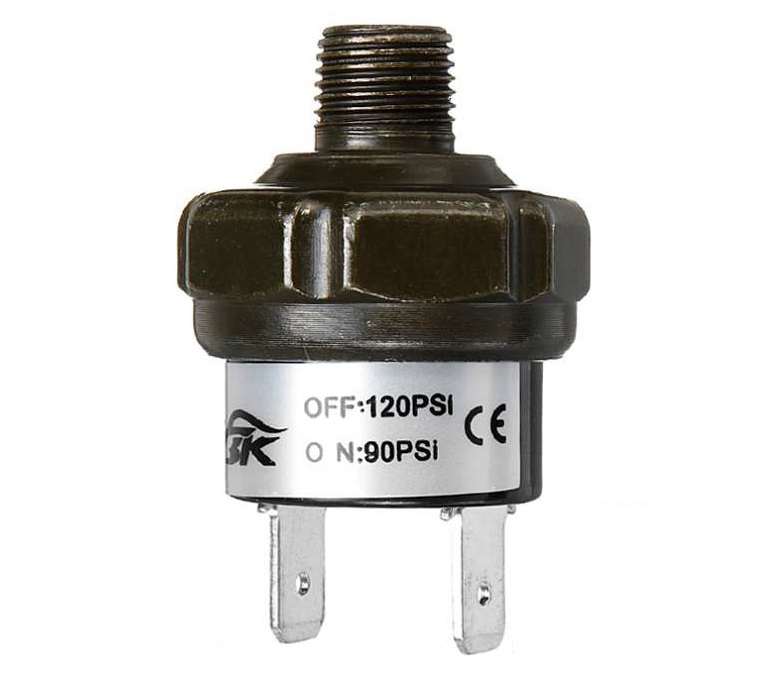
Would you like to contact one of our experts? They will be happy to help you find the best compressor for you.
Contact us
What Type of Compressor Do I Need?
What Type of Compressor Do I Need?
Find out what compressor is best suited for your needs.
Find out what compressor is best suited for your needs.
Find out what compressor is best suited for your needs.
Do I Need an Oil-free or Lubricated Compressor?
Do I Need an Oil-free or Lubricated Compressor?
Find out whether or not you need an oil-free compressor, or if a lubricated compressor will do the job.
Find out whether or not you need an oil-free compressor, or if a lubricated compressor will do the job.
Find out whether or not you need an oil-free compressor, or if a lubricated compressor will do the job.
To get the cost of pumping and compressor equipment - fill out the questionnaire.
Calculation of the cost of basic compressor units
Engineering solutions and block technological complexes
Booster (English booster from boost - increase pressure, voltage) - an auxiliary device for increasing force or pressure.
Corken booster compressors are used in processes that require the compression of various gases, including corrosive, toxic, explosive, inert and toxic gases.
These compressor units are used, for example, in the oil industry to pressurize oil wells or refineries. Booster compressors are widely used in technological processes in the chemical industry.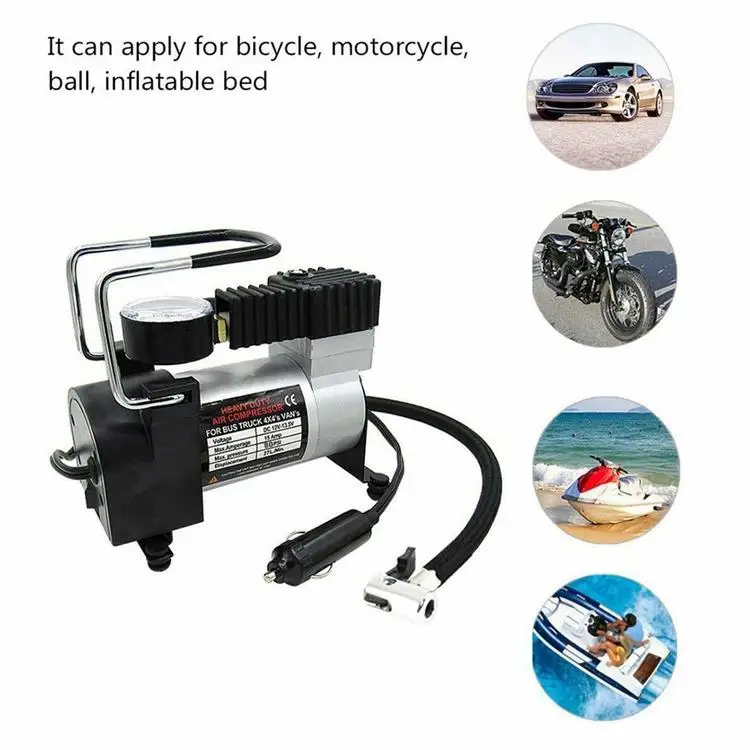
A wide range of industrial air systems in factories, capable of consuming large amounts of air and other gases at different pressures. Special equipment and units in factories need air, both with the absence of oil and with it, high pressure.
An economical way to provide high pressure air is to use Corken reciprocating booster compressors.
Air Booster Compressor uses factory air to increase it to the required pressure.
Take a look at Corken's state of the art booster compressors and their specifications for high pressure compressed air production:
| Single stage design | ||||||||
| Compressor model | D91 | D291 | D491 | D491-3 | D691 | D691-4 | WFD691 | WFD691-4 |
| Max. capacity psi (bar g) | 335 (23.1) | 335 (23.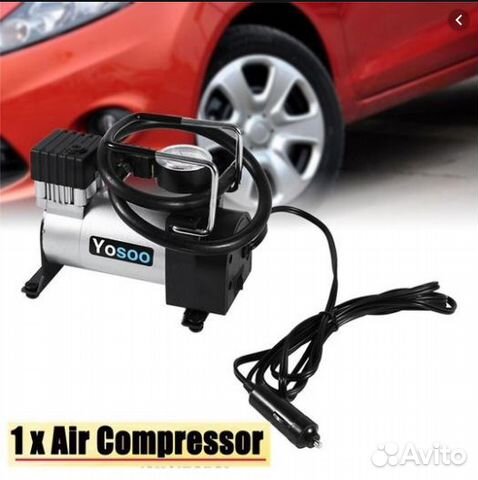 1) 1) | 335 (23.1) | 600 (41.4) | 335 (23.1) | 600 (41.4) | 335 (23.1) | 600 (41.4) |
| Max. work pounds per square inch (bar g) | 200 (13.8) | 200 (13.8) | 200 (13.8) | 200 (13.8) | 200 (13.8) | 200 (13.8) | 225 (15.5) | 225 (15.5) |
| Max SCFMa (N•m3/hr)b | 24 (39) | 53 (85) | 91 (146) | 58 (93) | 179 (288) | 140 (225) | 173 (278) | 134 (215) |
| Two-stage design | ||||||||||
| Compressor model | FD151 | D191 | FD351 | WFD351 | D391 | WD391 | WFD551 | FD591 | WFD591 | D791 |
| Max. operating capacity psi (bar g) | 1200 (82.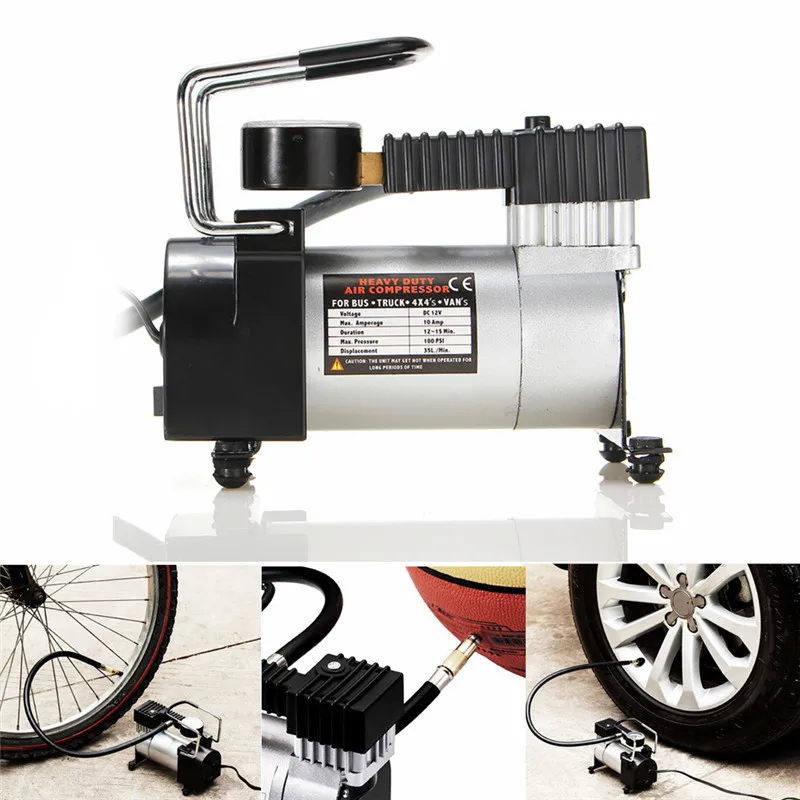 8) 8) | 600 (41.4) | 1200 (82.8) | 1200 (82.8) | 610 (42.1) | 610 (42.1) | 1000 (69.0) | 600 (41.4) | 600 (41.4) | 600 (41.4) |
| Max. work pounds per square inch (bar g) | 250 (17.2) | 350 (24.1) | 500 (34.5) | 700 (48.3) | 400 (27.6) | 550 (37.9) | 600 (41.4) | 450 (31.0) | 540 (37.2) | 500 (34.5) |
| Max SCFMa (N•m3/hr)b | 18 (29) | 27 (43) | 24 (39) | 24 (39) | 57 (92) | 51 (82) | 75 (121) | 140 (225) | 129 (207) | 183 (294) |
| Single stage design | ||||||||
| Compressor model | D91 | D291 | D491 | D491-3 | D691 | D691-4 | WFD691 | WFD691-4 |
Max.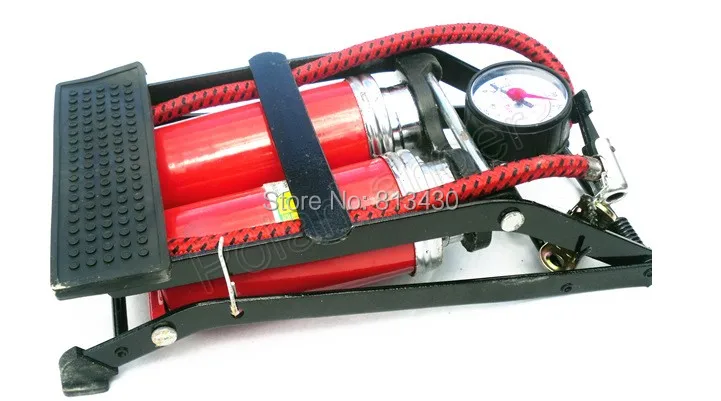 operating capacity operating capacity psi (bar g) | 335 (23.1) | 335 (23.1) | 335 (23.1) | 600 (41.4) | 335 (23.1) | 600 (41.4) | 335 (23.1) | 600 (41.4) |
| Max. work pounds per square inch (bar g) | 300 (20.7) | 300 (20.7) | 300 (20.7) | 375 (25.9) | 300 (20.7) | 375 (25.9) | 300 (20.7) | 400 (27.6) |
| Max SCFMa (N•m3/hr)b | 44 (71) | 78 (125) | 123 (198) | 95 (153) | 280 (450) | 220 (354) | 280 (450) | 215 (346) |
| Two-stage design | ||||||||||||||||||
| Compressor model | FD151 | D191 | FD351 | WFD351 | D391 | WD391 | WFD551 | FD591 | WFD591 | D791 | ||||||||
Max.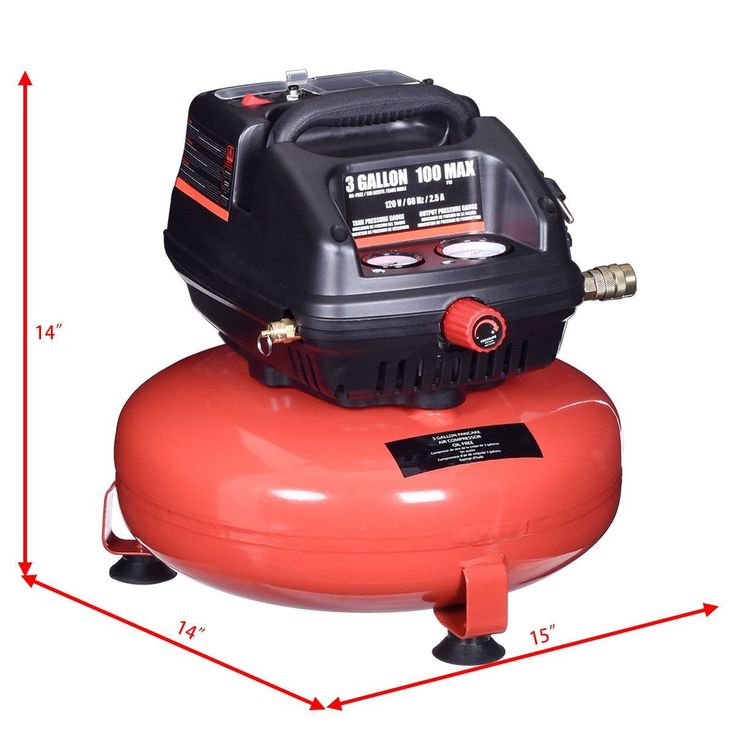 operating capacity operating capacity psi (bar g) | 1200 (82.8) | 600 (41.4) | 1200 (82.8) | 1200 (82.8) | 610 (42.1) | 610 (42.1) | 1000 (69.0) | 600 (41.4) | 600 (41.4) | 600 (41.4) | ||||||||
| Max. work pounds per square inch (bar g) | 500 (34.5) | 500 (34.5) | 900 (62.1) | 1080 (74.5) | CF | CF | 900 (62.1) | CF | CF | CF | ||||||||
| Max SCFMa (N•m3/hr)b | 31 (50) | 48 (77) | 42 (68) | 41 (66) | CF | CF | 131 (211) | CF | CF | CF | ||||||||
| Single stage design | ||||||||||||||||||
| Compressor model | D91 | D291 | D491 | D491-3 | D691 | D691-4 | WFD691 | WFD691-4 | ||||||||||
Max. operating capacity operating capacity psi (bar g) | 335 (23.1) | 335 (23.1) | 335 (23.1) | 600 (41.4) | 335 (23.1) | 600 (41.4) | 335 (23.1) | 600 (41.4) | ||||||||||
| Max. work pounds per square inch (bar g) | 300 (20.7) | 300 (20.7) | 300 (20.7) | 475 (32.8) | 300 (20.7) | 475 (32.8) | 300 (20.7) | 500 (34.5) | ||||||||||
| Max SCFMa (N•m3/hr)b | 55 (88) | 99 (159) | 156 (251) | 94 (151) | 359 (577) | 217 (349) | 359 (577) | 194 (312) | ||||||||||
| Two-stage design | ||||||||||||||||||
| Compressor model | FD151 | D191 | FD351 | WFD351 | D391 | WD391 | WFD551 | FD591 | WFD591 | D791 | ||||||||
Max. operating capacity operating capacity psi (bar g) | 1200 (82.8) | 600 (41.4) | 1200 (82.8) | 1200 (82.8) | 610 (42.1) | 610 (42.1) | 1000 (69.0) | 600 (41.4) | 600 (41.4) | 600 (41.4) | ||||||||
| Max. work pounds per square inch (bar g) | 600 (41.4) | 540 (37.2) | 1000 (69.0) | 1080 (74.5) | CF | CF | 900 (62.1) | CF | CF | CF | ||||||||
| Max SCFMa (N•m3/hr)b | 38 (61) | 58 (93) | 54 (87) | 54 (87) | CF | CF | 161 (259) | CF | CF | CF | ||||||||
| Single stage design | ||||||||||||||||||
| Compressor model | D91 | D291 | D491 | D491-3 | D691 | D691-4 | WFD691 | WFD691-4 | ||||||||||
| Max capacity psi (bar g) | 335 (23.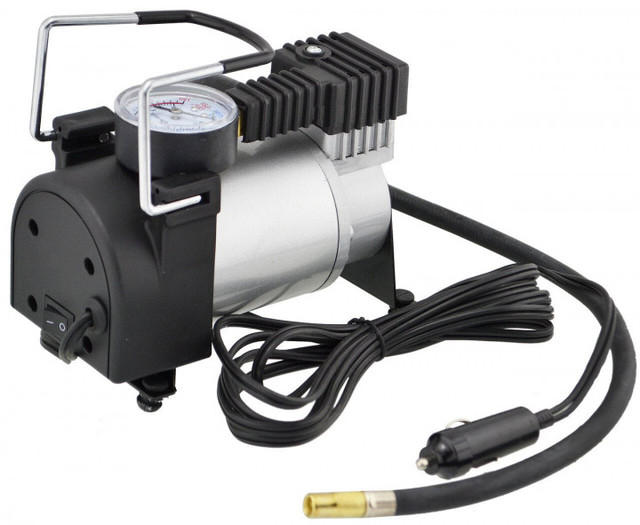 1) 1) | 335 (23.1) | 335 (23.1) | 600 (41.4) | 335 (23.1) | 600 (41.4) | 335 (23.1) | 600 (41.4) | ||||||||||
| Max. work pounds per square inch (bar g) | 300 (20.7) | 300 (20.7) | 300 (20.7) | 540 (37.2) | 300 (20.7) | 540 (37.2) | 300 (20.7) | 540 (37.2) | ||||||||||
| Max SCFMa (N•m3/hr)b | 67 (108) | 120 (193) | 188 (302) | 99 (159) | 437 (703) | 237 (381) | 437 (703) | 236 (379) | ||||||||||
| Two-stage design | ||||||||||
| Compressor model | FD151 | D191 | FD351 | WFD351 | D391 | WD391 | WFD551 | FD591 | WFD591 | D791 |
Max.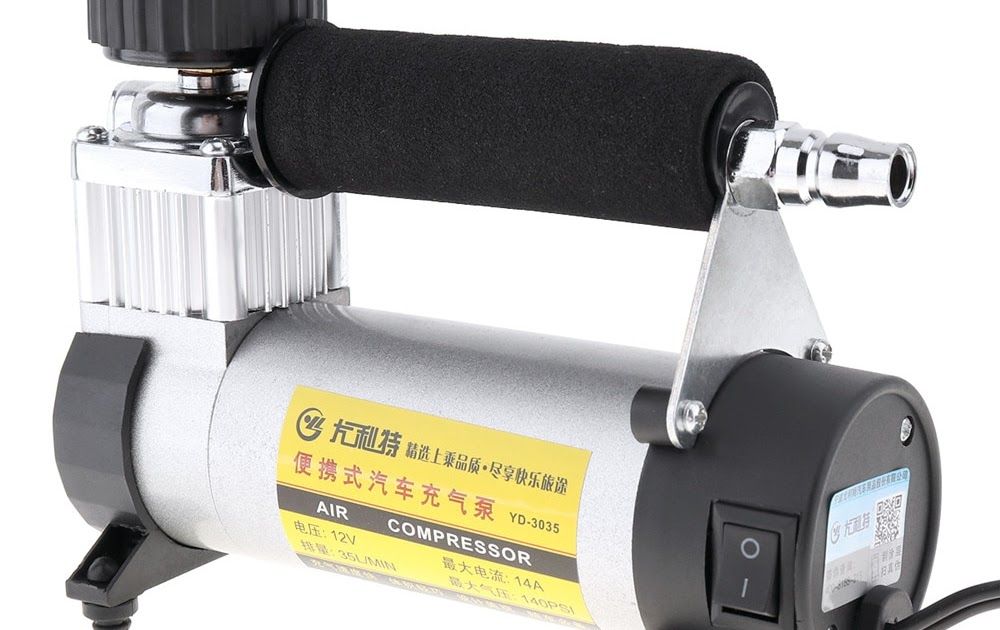 | ||||||||||